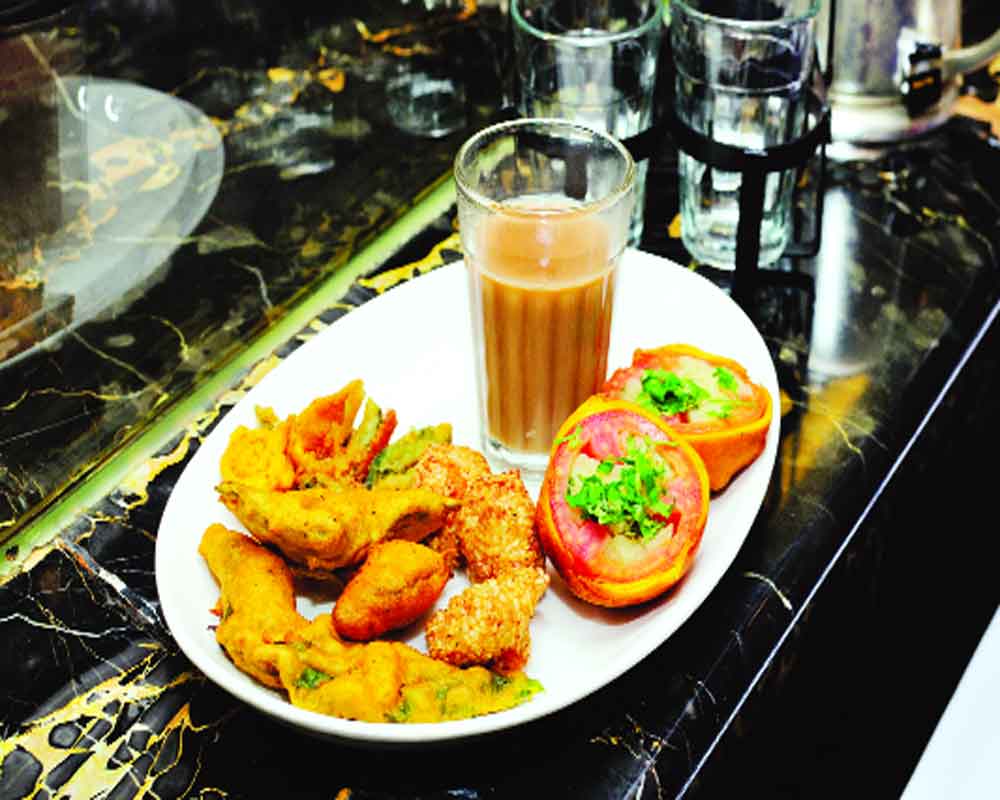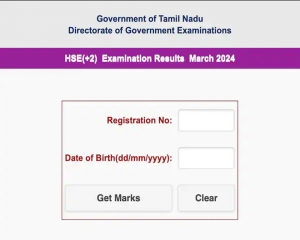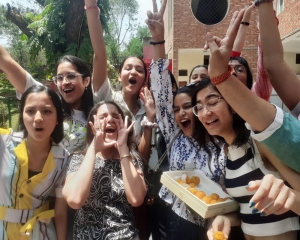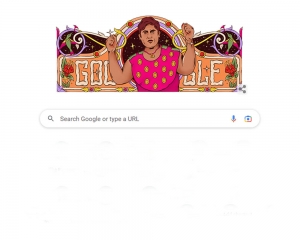Nutrition coach Sangeeta Khanna talks about how the golden-brown fritters are misunderstood today by being labelled as an unhealthy and oily snack. However, the reality is the other way round, discovers Chahak Mittal
A range of ingredients, spices, oils in the fryer, various vegetable leaves and lentils are spread across nutrition coach Sangeeta Khanna’s mini kitchen slab, which she sets up at The Imperial Culinary Club’s Daniell’s Tavern, as she launches her book, Pakodas: A Snack For All Seasons. She asks the various journalists and food connoisseurs sitting in the audience, ‘What do the season’s first showers remind you of?’ Pakodas with a cup of chai is the answer. And why not? The great Indian snack, no matter what form or shape it comes in, is one that’s available at every nook and corner of the country, making room for the most satisfying bite ever. It’s a testament to India’s love affair with anytime food.
However, frying might have varying definitions and ideas. And the one that Khanna believes in is not known to or even followed by many. And some misconceptions around fried foods actually came to Khanna as her inspiration behind penning the book. She goes on to explain, “Most people today link pakodas with unhealthy, artery clogging food, due to its ‘deep-fried’ tag. However, there are so many other such foods that, too, are in the list but we consume them happily. We would easily have red velvet cakes and pastries. Cookies are served as complementary with coffee and we eat them without noticing that there could be fat in their batter too. However, there is no fat in the batter of the pakodas. It is just dropped in hot oil, after which it’s outer surface immediately gets sealed so the oil doesn’t go inside. People’s misconception is that oil gets absorbed in the pakoda. But it only clings to the surface and if we keep the pakoda on a paper towel, all the oil will drain out and you will get a perfectly tasty and healthy snack which can be personalised as per your taste — sweet, savoury, teekha, chatpata, spicy, crunchy and more.”
Pakodas are not just fritters, she says as she prepares the batter for her first presentation of the evening — Nariyal katli (Coconut slice) ka pakoda. “There are distinct varieties of pakodas in the Hindi heartland itself and we are just on the brink of losing them all due to our misconceptions around it. Each city has its own. The names would vary like their cultures. Mirchi bajji in Hyderabad, Mirchi vade in Jaipur, Batata vada in Mumbai, Palak patte ka pakoda served like chaat in Delhi and even Ram Laddu, whereas, Gujarat has numerous bhajias and gotas,” she says.
As she dips the water-soaked, finger-sized coconut slices in the batter made with moong dal (split green gram), she points towards “another bias” that lies in people’s thinking associated with pakodas. “They were often made using local lentils and not just chickpea flour or gram flour unlike today. You can use moong dal or even urad dal since besan is not available or accessible to everyone. Lentils are so rich in India and we use them so beautifully. So why don’t we celebrate them?” she says and drains the last bunch of Nariyal katli ka pakodas and serves it on a plate for the audience to relish.
While the aroma already wraps up my senses, I wait for the plate to complete its round and reach me. The golden-brown fritter is crispy on the outside and even crispier on the inside due to the water-soaked coconut slice. The pakoda yet melts inside my mouth. This isn’t something one can resist. She lives up to what she preaches. There isn’t a trace of oil dripping from my fingers after I eat it, which is never the case when eating at a street-side kiosk. And while the coconut, being a watery fruit, could have made the pakoda soggy, her water-soaking strategy for two to four hours before the cookout made it emerge a winner.
I wonder why we always cook the conventional and very traditional and clichéd aloo (potato), mirchi (chilli), pyaaz (onion), ghobhi (cauliflower), palak patta (spinach leaf), lauki (bottle gourd) ke pakode and many more? “Well, it’s because people don’t experiment with this snack anymore. These recipes have been established by our ancestral grandmothers and today, we have forgotten them,” says Khanna and points out some names of pakodas that are hardly known or talked about — Phoolon ke pakode, Bajka, Lachha, Rikwachh, Fulouri/Phulouri, Kalmi bade, Mungodi, Joori, Bhabra and many more. And she presents some of these in her mini pakoda-making demonstrations too.
For the cookout session, Khanna directly sourced the organic ingredients from Tijara Farms, an organic farm spread across 10 acres in Rajasthan, the brainchild of Sneh Yadav and her husband, Col. Tara. Khanna’s Bhaap ki mungodi and with some interesting variations like Arbi ke patton ka rikwachh, and Sehjan ke phoolon ka patoda, the menu turns out to be a treat. However, the Khatte ras ki pakodi is the winner. The mini urad dal badis, soaked in tangy tamarind water with chopped chillis and coriander and mint leaves, is the one that will tingle your jaws and make you crave for more of these juicy fritters.


























